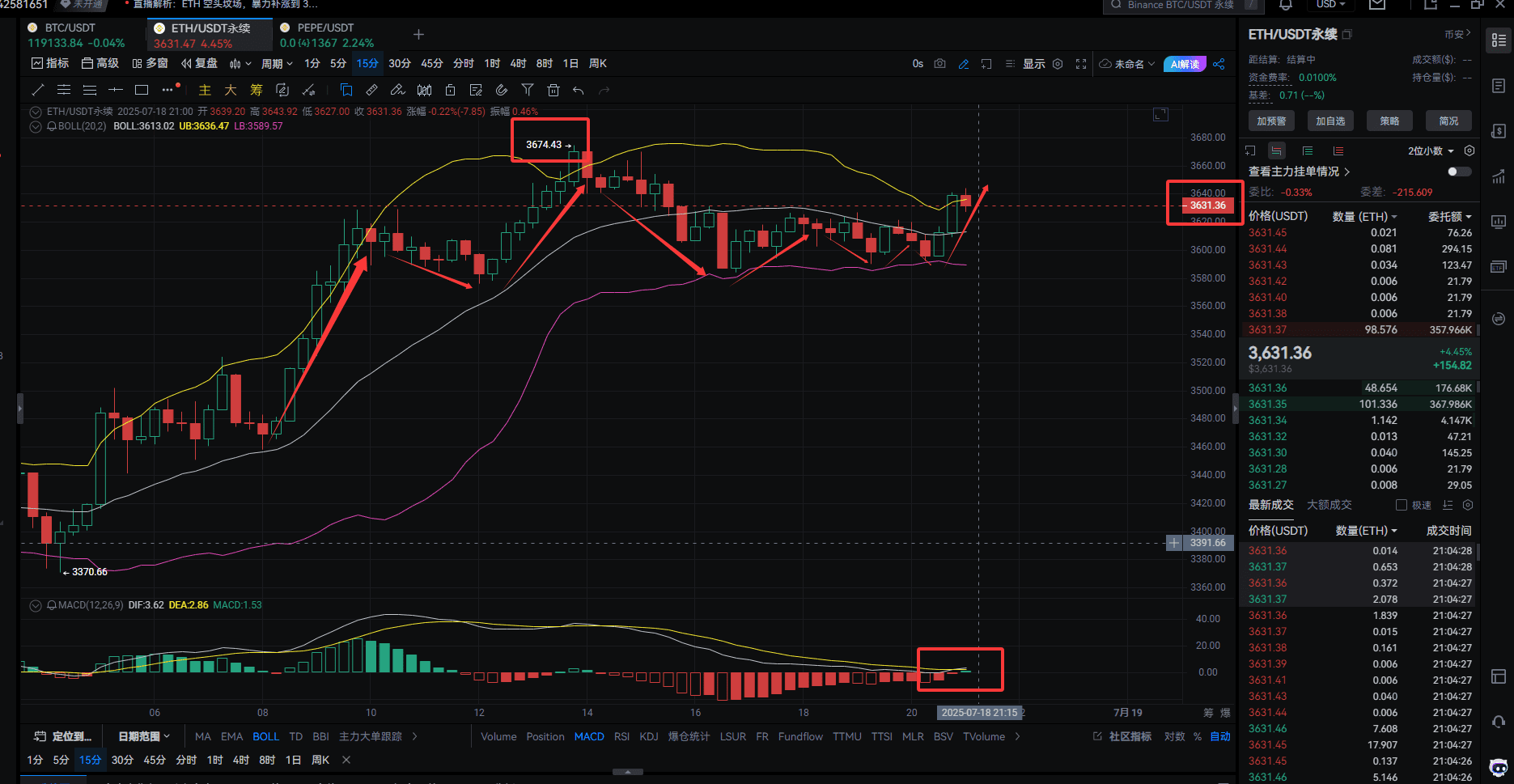Recently, the competition around Ethereum (ETH) in the cryptocurrency market has intensified, and the holding movements of whale address 0x8c58 have become the focus of market attention. According to on-chain data monitoring, this whale deposited 3.74 million USDC into the Hyperliquid platform on July 12 and shorted 18,394 ETH with 15x leverage, with a position value of 54.3 million USD. This high-leverage short operation has sparked widespread market discussion due to its large scale and high leverage rate; if ETH prices continue to rise, the risk of liquidation will significantly increase, possibly triggering a 'short squeeze' effect and becoming a signal for retail investors to operate in the opposite direction.
1. The inverse indicator logic of whale 0x8c58
Risk exposure of high-leverage short positions
A giant whale has chosen to short ETH with 15x leverage, meaning its position is extremely sensitive to price fluctuations. According to futures trading rules, when the price of ETH rises above its liquidation threshold, the platform will forcibly close positions to avoid margin deficiencies. If the whale's liquidation price is lower than the current market price, its forced liquidation will release substantial buying demand, further driving up ETH prices and creating a 'short squeeze'.Inverse verification of market sentiment
The cryptocurrency fear and greed index recently surged above 70, entering the 'greed' zone, indicating strong bullish sentiment in the market. At this time, the whale's contrarian short position may become a reverse indicator—when the majority of investors follow the trend to go long, the whale's liquidation risk instead strengthens the upward momentum. Historical data shows that similar high-leverage short position liquidations are often accompanied by accelerated price breakthroughs of key resistance levels.Resonance effect of institutional funds
Recently, institutional demand for ETH allocation has surged: BlackRock's Ethereum ETF saw an inflow of 499 million USD in a single day, setting a new historical record; corporate giants like SharpLink Gaming and BitMine collectively increased their holdings by over 124,000 ETH (approximately 420 million USD). The continuous inflow of institutional funds hedges against the whale's short positions, and if the price breaks through a critical point, institutional buying may amplify the chain reaction of whale liquidations.
2. Today's technical and fundamental analysis of ETH
(1) Technical aspects: Breaking through key resistance, strong bullish momentum
Price trends and support/resistance levels
ETH broke through the 3600 USD mark on July 18, with a 7-day increase of 21.7%, reaching a new high since January 2025. The current price is stable above 3500 USD, with the next target pointing to 4000 USD (2024 high). Technical indicators show:MACD: The histogram remains negative but is gradually shortening, indicating strengthening bullish momentum.
RSI: Short-term overbought (>70), but the long-term trend remains unchanged, and a pullback may provide entry opportunities.
Support levels: 2835 USD (recent low), 3057 USD (previous resistance turned support).
Resistance levels: 3600 USD (already broken), 4000 USD (psychological level).
Key signals from on-chain data
Exchange reserves: The supply of ETH on exchanges has fallen to a 5-year low, intensifying upward pressure on prices.
Changes in whale holdings: Other than 0x8c58, other whales have recently transferred over 146,000 ETH to CEX, but prices continue to rise against the trend, showing strong market absorption capacity.
(2) Fundamental aspects: Dual drivers of policy and technology
Historic opportunities for regulatory breakthroughs
On July 17, the U.S. House of Representatives passed the (GENIUS Act) and the (CLARITY Act), establishing a regulatory framework for stablecoins and digital assets, clearly transferring some regulatory authority from the SEC to the CFTC. This policy breakthrough has boosted market confidence, positioning ETH as a core target for compliant fund allocation.Long-term value of technological upgrades
Layer2 expansion progress: Daily transaction volume on Arbitrum Nova has exceeded 120 million, with Optimism, Base, and other L2 networks continuously attracting users and funds.
Siphoning effect of the staking economy: The ETH staking rate has risen to 43% (35.6 million ETH), with an annualized yield of around 5%, showing a strong willingness for institutional long-term holding. Staking reduces circulating supply, further reinforcing deflationary expectations.
The long and short game in the derivatives market
Binance data shows that the long-short ratio of ETH/USDT has risen to 1.0255, while the long-short ratio of top trader accounts has reached 2.3772, indicating a dominant bullish sentiment. In the past week, the amount of ETH futures short liquidations reached 438 million USD, far exceeding the long liquidations of 211 million USD, significantly weakening the strength of shorts.
3. Retail trading strategies and risk warnings
Timing and position management for entry
Aggressive strategy: If ETH pulls back to the 3400-3500 USD range (30-day moving average support), a small long position can be tried, with a stop-loss set below 3300 USD, targeting 3800-4000 USD.
Conservative strategy: Wait for a valid breakout above 4000 USD before chasing long, with a stop-loss referencing 3800 USD and a target looking at 4600 USD (2021 historical high).
Risk hedging and fund allocation
Options protection: Buying call options to hedge spot long risks or lowering position costs through combination strategies (such as bull spreads).
Diversified investment: Allocate no more than 30% of crypto assets to ETH, while the remaining funds can be allocated to L2 tokens (such as ARB, OP) or DeFi blue chips (such as UNI, AAVE).
Beware of market black swans
Policy uncertainty: If the (GENIUS Act) requires stablecoins to migrate to the federal chain, it could impact the ETH ecosystem in the short term.
Technical faults: L2 networks (such as Arbitrum) experiencing security vulnerabilities or scaling delays may trigger a liquidity crisis.
Macroeconomic risks: Delays in interest rate cuts by the Fed or escalation of geopolitical conflicts may lead to a broad decline in risk assets.
4. Conclusion: Whale liquidation may become a bull market accelerator
The high-leverage short position of whale 0x8c58 has become a 'ticking time bomb' in the market. Amid the influx of institutional funds, frequent positive policy developments, and breakthroughs in technical aspects, the risk of its liquidation paradoxically strengthens the upward logic of ETH. For retail investors, it is crucial to closely monitor the dynamics of ETH prices and whale positions: if the price stabilizes above 3600 USD and rumors of whale liquidations escalate, decisive long positions can be taken; if a pullback occurs, it should be viewed as a medium to long-term layout opportunity. In the highly volatile environment of the cryptocurrency market, controlling positions, strict stop losses, and respecting the market remain fundamental to survival.

Xiao Xun's trading advice today is still to go long on ETH, looking at the 3700 position; if it breaks 3700, continue to look towards 3800.
Entry position: Enter at 3610 or 3620, with 3700 as the first profit target.



